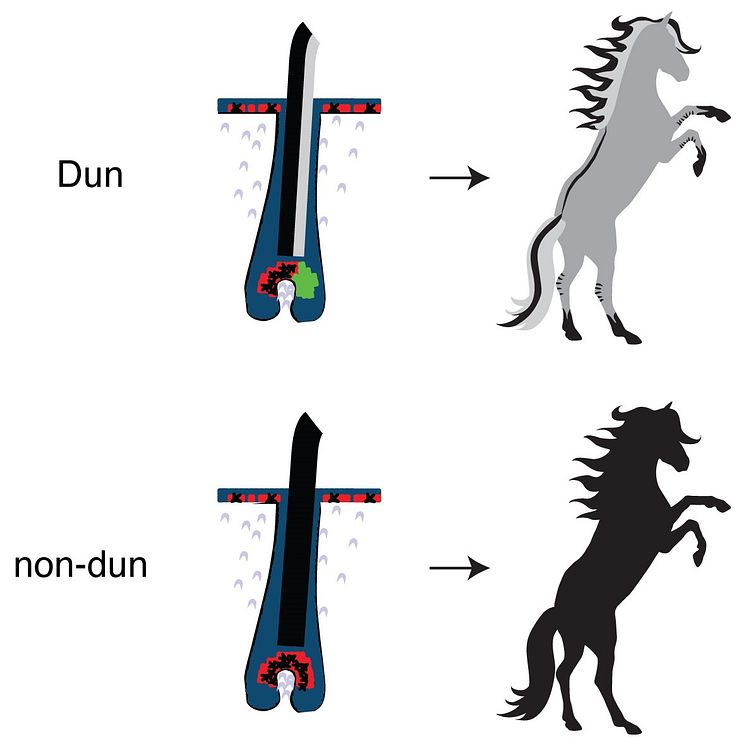
Image -
DunHorses4
Illustration of the mechanism underlying Dun colour. TBX3 expression (indicated in green) in the hair follicle in Dun horses leads to lack of pigment production in parts of the hair follicle; pigment indicated in balck. In non-dun horses there is no TBX3 expression in the hair follicle, and the entire hair is fully pigmented.
Kelly McGowan and Freyja Imsland
- License:
- Creative Commons Attribution, no derivatives
With a Creative Commons license, you keep your copyright but allow people to copy and distribute your work provided they give you credit. You permit others to copy, distribute and transmit only unaltered copies of the work — not derivative works based on it.
- By:
- Kelly McGowan and Freyja Imsland
- File format:
- .jpg
- Size:
- 1181 x 1181, 96.3 KB